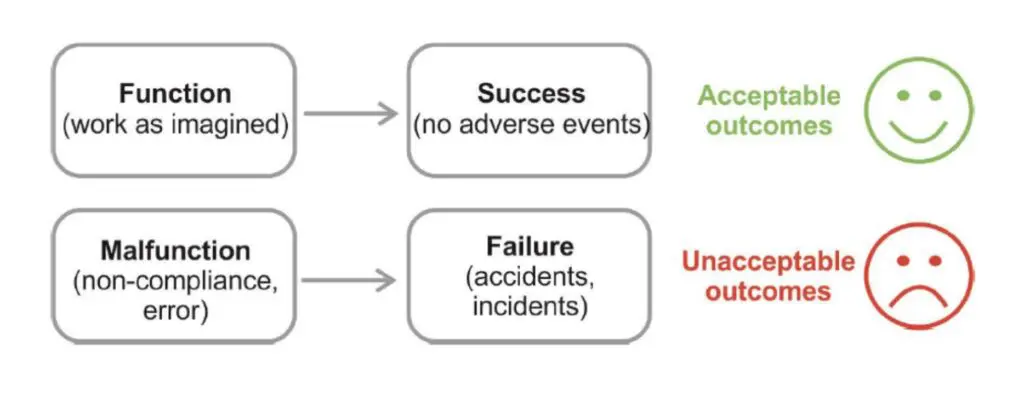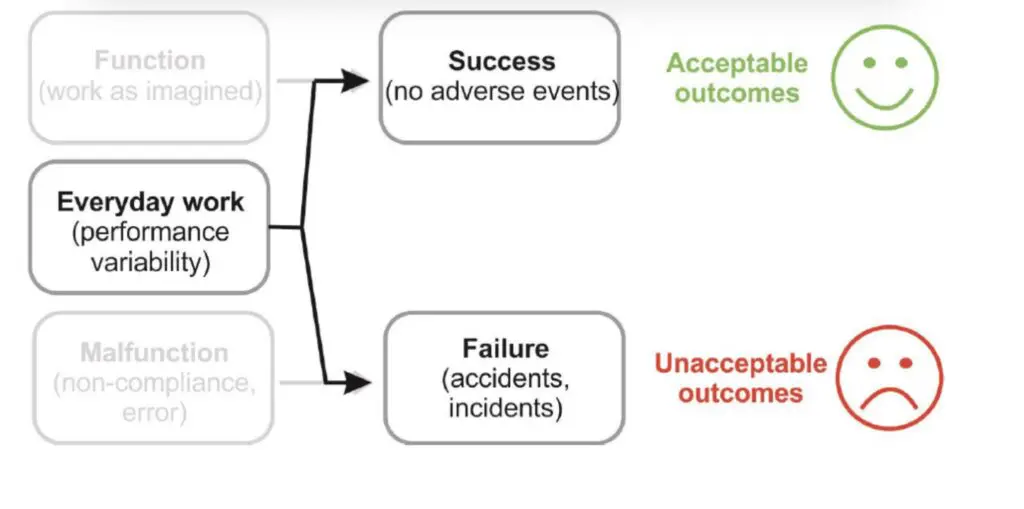The Weekly Reflektion 04/2023
There is an ongoing discussion in the safety community on Safety 1 and Safety 2 and whether these approaches to safetyare different paradigms or just two sides of the same issue. While this may be an interesting academic discussion, we should not lose sight of the practical implications. Our view is that there are merits in both approaches, and it is likely that many organisations use both in practice. The intention of this Reflektion is not to advocate one or the other but rather to stimulate discussions so that you can understand more of how to make the improvements in safety that you aspire to.


If you always do what you always did, will you always get what you always got?
In the Reflektion in week 37/2022 we mentioned Professor Erik Hollnagel who has given many insights into humans, and how to understand human behaviour in the context of accident prevention. We mentioned that his thoughts on ‘Safety-1 and Safety-2’ would be a subject for a future Reflektion.
The Safety 1 approach, and sometimes described as the traditional approach, is based on the view of safety as the absence of incidents and accidents. The objective then is to ensure as few things as possible go wrong. A success is an acceptable outcome, and it assumes that everything functioned as intended to achieve this outcome (work as imagined), see Safety 1 approach above. The incident or accident occurs due to technical, human and/or organisational causes and people and their fallibility are a central factor. Investigation into the incident or accident is focussed on identifying the causes and correcting these so that the incident or accident does not reoccur. The Safety 1 approach implies a rigid view of the way an activity is performed, and the outcome achieved. Do it as intended then the outcome will be success. Fail to do it as intended and the outcome will be a failure. Hence the saying, ‘if we always do what we always did, then we will always get what we always got’.
However, it is seldom that we do things exactly the same, in exactly the same circumstances. Often there are differentpeople involved in the activity. We may not have control of other factors that may influence the activity. There may be factors that we not aware of that could influence the outcome of our actions. Even if we do the same as last time, but we may not get what we got previously.
The Safety 2 approach starts with the variability of people and their performance. There is an acceptance that relatively minor changes in the way an activity is carried out or the circumstances it is carried out in can change the outcome dramatically. Safety 2 recognises that a successful outcome is no guarantee that the work was carried out as intended. Errorsmay have been made, however corrected underway so that the outcome is unaffected. In the Safety 2 the person is a resource in anticipating problems and being resilient to changes. The purpose of the investigation changes to become an understanding of how things usually go right and reinforcement of these rather than correction of faults.
As Eric Hollnagel himself says, the way forward is most likely a combination of the two approaches, and this seems reasonable. However, before any combination one has tounderstand what the two approaches are.
